The Bayon at Angkor Thom was high on my list of places to revisit during my last trip to Cambodia.
The Bayon has been called one of the world’s most mysterious and powerful religious buildings (by the Khmer studies expert Claude Jacques). So I planned to take more photos this time around, and I hoped to get out alive.
I published a 3 part series on the Bayon of Angkor Thom early this year, which explains some of its meanings. But I took the pics during a trip in early 2007. I didn’t take a good camera back then because I didn’t plan to publish any of the photos. These new posts have more pics and fewer words–you can click between both sets for a good intro to this great monument.
Many Bayon fans enjoy its sculpture because much of it shows real people. Angkor Wat’s friezes mostly depict the king, nobles, gods and characters from Indian mythology. The Bayon shows ordinary folks.
Many of the Bayon’s scenes are true to life in Cambodia today.
The carvings aren’t as refined as Angkor Wat’s, but they’re more folksy–you can relate to the people across the centuries, like this boy walking behind the cart wheel of his parents.
You can peer into the lives of the folks who lived among the rice fields between the great Khmer monuments we admire today.
Not everything in these lives is pretty–the above blokes have laid bets on a cock fight. They intently watch just seconds before the birds tear into each other.
But we can see a love of nature in the above shot. Monkeys sit in the branches, and birds fly overhead. All life-forms seem integrated within a dense tropical landscape, as they often are in Indian sculpture.
The people who carved the friezes on the Bayon were thus going for a full vision of life. Khmers often did–other great temples, like Banteay Srei and Angkor Wat, have friezes with these sweeping perspectives that encompass everything under the sun and beyond.
So the Bayon’s intimate scenes of Khmers’ daily lives are special. Not too many escaped my camera this time, so I’ll be generous with them and share more in the next post on the Bayon. We’ll look more deeply into daily life in ancient Angkor, and put some flesh and blood on the great temples there.
Europeans were building the great Gothic cathedrals when the Bayon went up, including Paris Notre Dame.


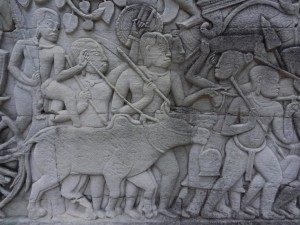
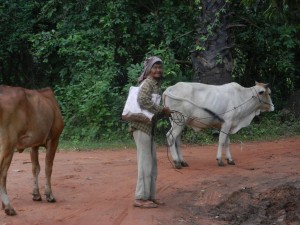

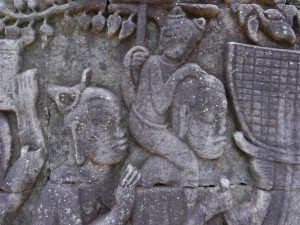
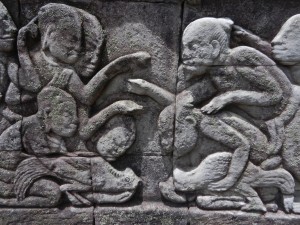
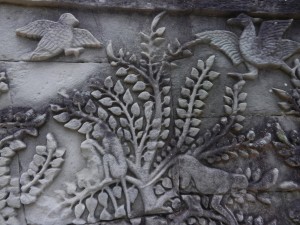
Comments on this entry are closed.